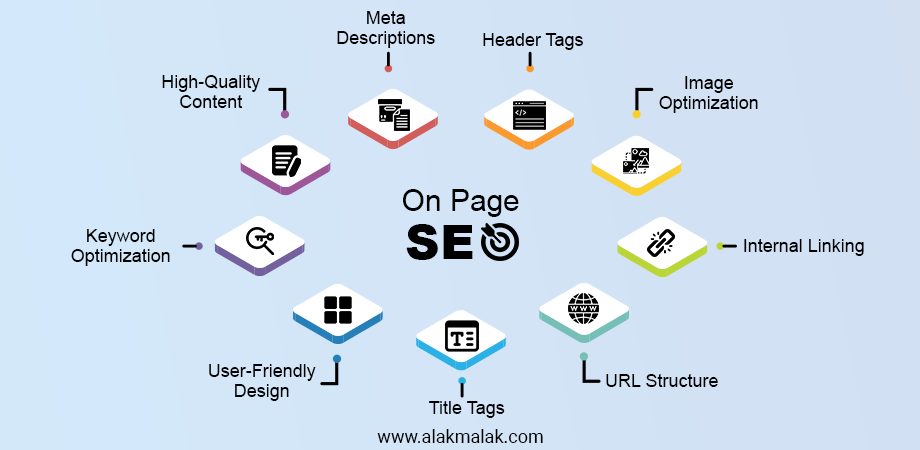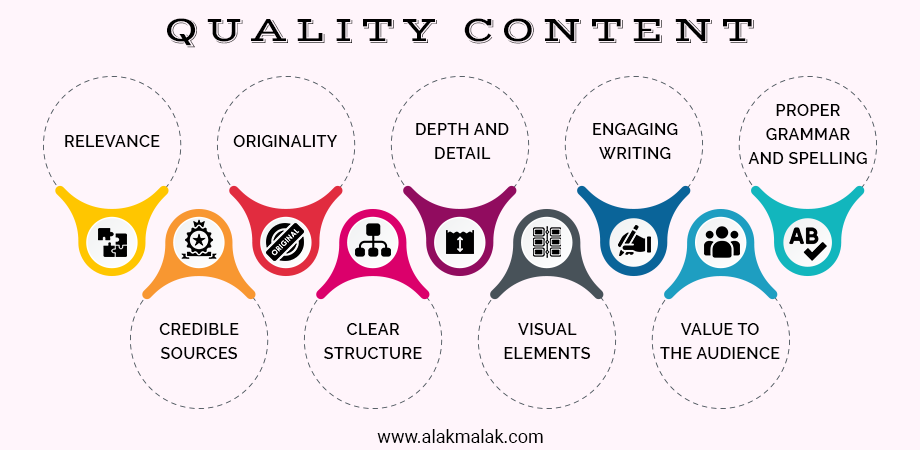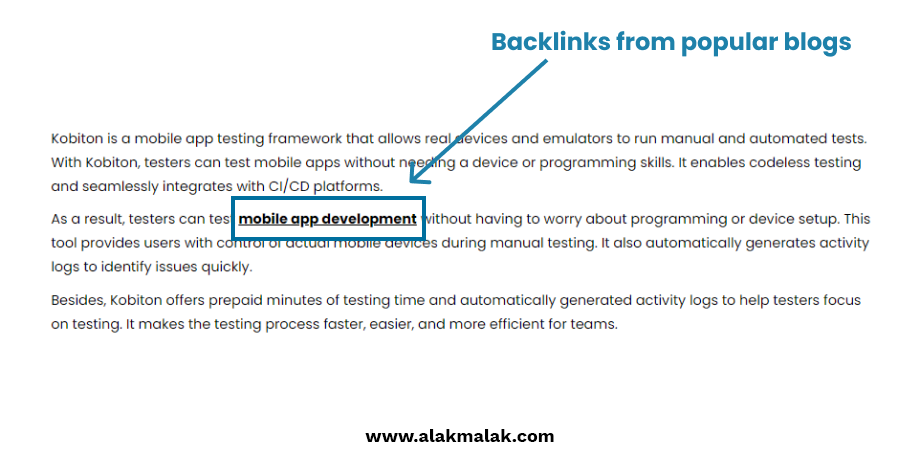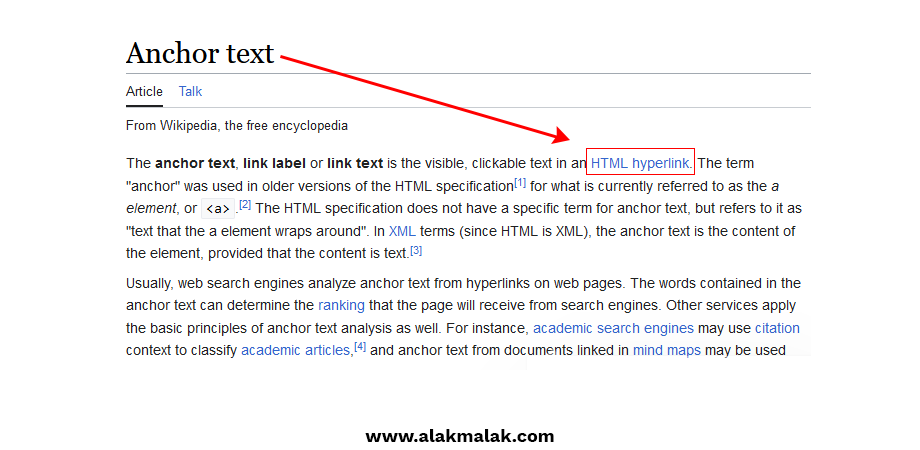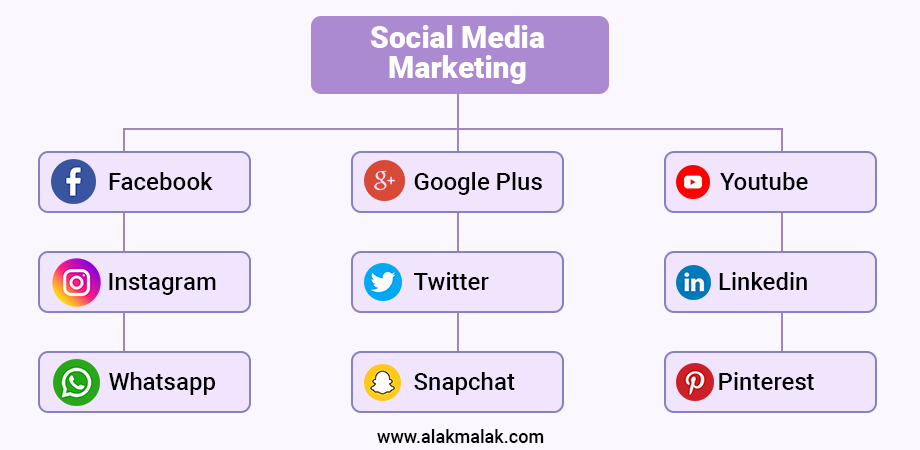In today’s crowded digital landscape, simply having a website is no longer enough to stand out and attract the right audience. With millions of websites vying for attention, how can you ensure your content is discoverable and drives real awareness for your brand or business?
As someone with 18 years of experience in web design and development, I’ve helped countless clients tackle this challenge. Over the years, I’ve developed a proven process for how to optimize website content to maximize visibility and engagement. In this blog post, I’m excited to share my top tips to help you do the same.
First, let’s start with an eye-opening statistic: 90% of online experiences begin with a search engine. This highlights just how crucial it is to ensure your website content is optimized for discoverability. After all, if potential customers and clients can’t find you, how can you expect to convert them?
That’s where the strategies I’ll outline come in. By implementing simple yet powerful techniques to optimize your website content, you’ll be able to rise above the noise, reach your target audience, and turn website visitors into loyal customers. From keyword research to content structuring to technical SEO, you’ll walk away with a playbook for making your website content shine.
So if you’re ready to take your online presence to new heights, read on. Your path to better discoverability and brand awareness starts here.
How To Optimize Website Content for Better Discoverability and Awareness:
1. Keyword Research
At the heart of any effective content optimization strategy lies thorough keyword research. By identifying the right keywords and phrases your target audience is actively searching for, you can ensure your website content is found by the people who matter most.
Why Keyword Research Matters for Business Websites
Consider this: 53% of all website traffic comes from organic search. That means over half of your potential customers and clients are using search engines like Google to find the products, services, and information they’re looking for. If your website content isn’t optimized around the keywords they’re searching for, you’re missing out on a huge opportunity to drive valuable traffic and leads.
Implementing Keyword Research
So how can you put the power of keyword research to work for your business website? Here are some actionable steps to follow:
- Brainstorm Seed Keywords: Start by thinking about the core topics, services, and products your business offers. What words and phrases would your ideal customers use to search for what you provide?
- Use Keyword Research Tools: Leverage free tools like Google Keyword Planner, Ahrefs, and SEMrush to uncover search volume data, related keywords, and competitor insights. This will help you identify the most lucrative keywords to target.
- Analyze Search Intent: Look beyond just search volume and consider the intent behind the keywords you’re evaluating. Are people searching to make a purchase, find information, or something else? Aligning your content with search intent is key.
- Prioritize and Implement: Once you’ve compiled your keyword research, create a plan to strategically integrate the most promising keywords throughout your website content, from page titles and headings to body text and meta tags.
The Proof is in the Numbers
Still not convinced of the power of keyword research? Consider this: websites that appear on the first page of Google search results receive 92% of all traffic from that search. By optimizing your content around the right keywords, you’ll position your business to claim that coveted real estate and reap the benefits of increased visibility, traffic, and conversions.
2. Focus on making the User experience easy
While keyword optimization is essential for discoverability, it’s only half the battle. Once visitors arrive on your website, you need to ensure they have a seamless, user-friendly experience that keeps them engaged and encourages them to take action.
Why User Experience Matters for Business Websites
Statistics show that a whopping 88% of online consumers are less likely to return to a website after a bad user experience. That’s a staggering number when you consider how much time and effort goes into driving traffic to your site in the first place. If visitors can’t easily find what they’re looking for or navigate your website, you’re essentially throwing that hard work out the window.
Implementing a Smooth User Experience
So how can you optimize your website’s user experience? Here are some key steps to take:
- Prioritize Site Navigation: Ensure your navigation menu is clean, intuitive, and allows visitors to quickly find the information they need. Utilize clear labeling, logical organization, and even breadcrumb trails to guide them.
- Make Content Scannable: Most online readers have short attention spans. Break up your text with plenty of headings, subheadings, bullet points, and other formatting to make it easy to skim and digest.
- Optimize for Mobile: With mobile traffic accounting for over 50% of all web usage, consider responsive website design service to provide a seamless experience on smartphones and tablets. Ensure your website is mobile-responsive and fast-loading.
- Eliminate Friction: Identify and address any potential roadblocks or pain points in the user journey, whether it’s complex forms, broken links, or unclear calls-to-action. Smooth out the experience at every touchpoint.
The Numbers Don’t Lie
The benefits of delivering a top-notch user experience are clear. Studies show that websites with high usability have 2.5 times more page views than poorly designed sites. Prioritizing the user’s needs isn’t just good for engagement – it’s also a proven path to improved traffic, conversion rates, and overall business success.
3. On-Page Optimization
Once you’ve nailed down your keyword strategy and delivered a smooth user experience, the next step in optimizing your website content is to ensure it’s properly structured and formatted for maximum visibility in search engine results.
Why On-Page Optimization Matters
Consider this: the first 5 organic search results on Google account for 67.60% of all the clicks. If your website content isn’t properly optimized, you’re missing out on the lion’s share of that valuable traffic. By taking the time to fine-tune elements like page titles, meta descriptions, and header tags, you can significantly boost your chances of ranking higher in search and reaching your target audience.
Implementing On-Page Optimization
Here are some key on-page optimization tactics to put into practice:
- Optimize Page Meta Title Tags : Your page titles should be concise, engaging, and incorporate your target keywords. Aim for 50-60 characters to ensure they display properly in search results.
- Write Compelling Meta Descriptions: Your meta descriptions act as your website’s “sales pitch” to searchers. Craft unique, action-oriented descriptions of 150-160 characters that compel clicks.
- Structure Content with Header Tags: Use H1, H2, H3 tags to create a clear, logical content hierarchy. This signals to search engines (and users) the most important information on the page.
- Interlink Relevant Pages: Build a web of internal links between your website pages. This improves navigation, boosts page authority, and distributes link equity.
- Optimize Images and Media: Include alt text, captions, and file names that incorporate target keywords for any images, videos, or other media on your pages.
The Numbers Speak for Themselves
The results of effective on-page optimization speak for themselves. Websites that follow SEO best practices see 40% more traffic from search than those that don’t. By taking the time to properly structure and format your content, you’ll position your business to claim prime real estate in search results and drive more qualified traffic to your site.
4. Quality Content That Users Want to Read
At the heart of any successful content optimization strategy is a focus on creating high-quality, user-centric content. After all, even the most technically optimized website won’t do you much good if the actual content doesn’t resonate with and provide value to your target audience.
Why Quality Content Matters
Consider this: 47% of buyers view 3-5 pieces of content before engaging with a sales representative. In other words, the content you publish on your website plays a crucial role in shaping first impressions and driving meaningful interactions with potential customers. If that content falls flat or fails to address their needs, you’re missing out on valuable opportunities to establish trust and authority.
Crafting Audience-Centric Content
So how can you ensure your website content hits the mark? Follow these steps:
- Understand Your Audience: Take the time to create detailed buyer personas that outline your target customers’ pain points, preferences, and informational needs. This will inform the topics, tone, and format of your content.
- Provide Genuine Value: Resist the temptation to simply produce content for the sake of search engines. Instead, focus on creating genuinely helpful, educational, and entertaining pieces that your audience will find genuinely useful.
- Prioritize Readability: Break up your content with clear, scannable formatting, engaging visuals, and a conversational tone that keeps readers engaged from start to finish.
- Conduct Ongoing Optimization: Regularly analyze metrics like time on page, bounce rate, and conversions to identify opportunities to refine and improve your content over time.
The Numbers Don’t Lie
The benefits of a content-first approach are clear. Websites with blogs tend to have 434% more indexed pages than those without. By committing to quality over quantity, you’ll not only improve your search visibility, but also establish your brand as a trusted, authoritative resource that customers can’t wait to engage with.
5. Consider User Intent
When it comes to optimizing your website content for maximum discoverability and impact, understanding user intent should be at the forefront of your strategy. By taking the time to deeply consider what your target audience is searching for and why, you can craft content that resonates on a much deeper level – leading to increased engagement, conversion rates, and overall brand awareness.
Why User Intent Matters
Consider this: 71% of consumers expect companies to deliver personalized interactions. In other words, generic, one-size-fits-all content simply won’t cut it in today’s competitive digital landscape. Your audience craves relevance, and failing to deliver on that front can severely undermine your efforts to stand out and build meaningful connections.
Implementing a User-Centric Approach
So how can you ensure your website content aligns with user intent? Follow these actionable steps:
- Conduct Keyword Research with Intent in Mind: When researching target keywords, don’t just focus on search volume – also analyze the underlying search intent. Are people looking to make a purchase, find information, or something else entirely?
- Create Personas and Journey Maps: Develop detailed buyer personas that outline your target customer’s goals, pain points, and informational needs. Use these to map out the typical user journey and identify key content opportunities.
- Optimize Content for Specific Intents: Structure your webpages, blog posts, and other content assets to cater to different user intents, whether that’s commercial (e.g. product pages), informational (e.g. how-to guides), or navigational (e.g. about us).
- Test and Iterate: Continuously analyze user behavior and feedback to refine your approach. A/B test different content variations, monitor engagement metrics, and make adjustments to better meet your audience’s evolving needs.
The Data Doesn’t Lie
The impact of user-centric content is clear. Websites that focus on intent-driven optimization see 2X higher engagement rates compared to those that don’t. By making your audience’s informational needs the north star of your content strategy, you’ll position your brand to stand out, drive meaningful conversions, and establish lasting loyalty.
6. Backlinks from Popular Blogs
In the world of search engine optimization, backlinks from high-authority websites are like gold. By securing placements on popular blogs and industry-leading publications, you can not only drive referral traffic to your site but also significantly boost your domain authority and overall discoverability.
Why Backlinks Matter for Business Websites
Consider this: websites with a strong backlink profile are shown to rank, on average, 25% higher in search results than those without. This is because search engines like Google view backlinks as a signal of trust and credibility – the more high-quality sites that link to your content, the more your site is seen as a valuable, authoritative resource.
Earning Backlinks from Popular Blogs
So how can you go about securing these coveted backlinks? Here are some proven strategies:
- Identify Relevant, High-Authority Sites: Use tools like Ahrefs or Moz to research industry blogs, publications, and other websites that align with your target audience and have strong domain authority.
- Produce Compelling Guest Content: Reach out to the editors and content teams at your target publications with pitches for guest blog posts or contributed articles. Propose topics that provide genuine value to their readers.
- Leverage Influencer Connections: Leverage any existing relationships you have with industry experts, thought leaders, or social media influencers. See if they’re willing to feature your business or link to your content on their own highly-trafficked channels.
- Monitor and Respond to Mentions: Set up Google Alerts or other media monitoring tools to stay on top of any online mentions of your brand or website. Reach out to the authors and publications to explore opportunities for backlink inclusion.
The Numbers Speak for Themselves
The impact of quality backlinks on search visibility and traffic is undeniable. In fact, a study by Ahrefs found that the top-ranking pages in Google have, on average, over 3 times more backlinks than pages ranking in positions 6-10. By prioritizing a strategic, high-quality backlink building strategy, you’ll position your business to rise above the competition and reach your ideal customers.
7. Internal Linking with Anchored Text
While external backlinks play a crucial role in boosting your website’s authority, internal linking is equally important for optimizing your content for discoverability and user experience. By strategically connecting your web pages through thoughtful, keyword-rich anchor text, you can improve navigation, distribute link equity, and signal relevance to search engines.
Why Internal Linking Matters
Consider this: websites with a strong internal linking structure see 40% more traffic from search than those without. This is because search engines use the relationships between your web pages to better understand the context and relevance of your content. The more you can guide users (and crawlers) through your site in a logical, efficient way, the more you’ll boost your overall findability and rankings.
Implementing Effective Internal Linking
Here’s how you can put the power of internal linking to work for your business:
- Identify Relevant Linking Opportunities: Review your content and make note of any pages that cover related topics or could provide additional value to users. These are prime candidates for internal links.
- Craft Compelling Anchor Text: When adding internal links, use keyword-rich anchor text that describes the page’s content and aligns with your SEO strategy. Avoid generic phrases like “click here.”
- Distribute Link Equity: Ensure your internal linking structure distributes “link juice” evenly throughout your website. Important pages should have the most links pointing to them.
- Monitor and Optimize: Routinely review your internal linking setup and make adjustments to improve user experience and search engine visibility. Tools like Google Search Console can provide helpful insights.
The Numbers Don’t Lie
The benefits of strategic internal linking are clear. Websites with a robust internal linking structure see, on average, a 40% increase in page views. By taking the time to thoughtfully connect your webpages, you’ll create a seamless user experience while simultaneously boosting your content’s discoverability and authority.
8. Social Media Promotion
In today’s digital landscape, no content optimization strategy is complete without a focused effort on social media promotion. By leveraging the power of platforms like Facebook, Twitter, LinkedIn, and others, you can extend the reach of your carefully crafted website content and drive even more qualified traffic to your business.
Why Social Media Matters for Businesses
Consider this: 54% of social media users research products and services on social platforms before making a purchase. In other words, if your target audience isn’t seeing your website content on the social channels they frequent, you’re missing out on a critical opportunity to connect with them and drive conversions. Effective social promotion can significantly boost your brand awareness, website traffic, and ultimately, your bottom line.
Implementing a Winning Social Strategy
So how can you put social media to work for your business website? Here are some key steps to follow:
- Identify the Right Platforms: Conduct research to determine which social networks your target customers are most active on. Focus your efforts on the 1-2 platforms that offer the greatest potential reach and engagement.
- Create a Content Calendar: Develop a consistent posting cadence and mix of content types (e.g. blog post links, industry insights, visual assets) to keep your audience engaged. Use scheduling tools to streamline the process.
- Leverage Paid Promotion: In addition to organic posting, invest in targeted social media advertising to amplify your best-performing content and reach new potential customers.
- Analyze and Optimize: Regularly review your social media analytics to identify top-performing content and refine your strategy over time. Be willing to experiment with new approaches.
The Numbers Speak for Themselves
The impact of effective social media promotion is undeniable. Studies show that social media posts with visuals see 650% higher engagement than text-only posts. By making social a core part of your content optimization efforts, you’ll position your business to capitalize on the massive audience and engagement potential of these powerful digital platforms.
Tools and Resources
Throughout this guide, we’ve covered a wide range of strategies and tactics you can implement to optimize your website content for better discoverability and brand awareness. But the journey doesn’t end there. To truly maximize the impact of your efforts, it’s important to arm yourself with the right tools, resources, and software to streamline and scale your content optimization processes.
Here are some of our top recommendations:
Keyword Research Tools:
- Google Keyword Planner (free)
- Ahrefs Keyword Explorer
- SEMrush Keyword Magic Tool
On-Page Optimization Helpers:
- Yoast SEO Plugin (free for WordPress)
- Surfer SEO
- Clearscope
Backlink Analysis:
- Ahrefs Site Explorer
- Moz Link Explorer
- Google Search Console
Social Media Scheduling and Analytics:
- Hootsuite (free plan available)
- Buffer
- Facebook Business Suite
Content Creation and Optimization:
- Grammarly (free version available)
- Hemingway Editor
- Canva (free plan)
In addition to these tools, we also recommend checking out these free online resources to expand your content optimization knowledge:
- Moz’s Beginner’s Guide to SEO
- HubSpot’s Website Optimization Guide
- Search Engine Land’s Latest SEO News and Strategies
By leveraging a combination of powerful software, handy apps, and authoritative industry guidance, you’ll have everything you need to take your website content to new heights of discoverability and brand awareness.
Case Study: The Power of Optimized Content: How “Whiz Kitchen” Boosted Visibility and Awareness
As the marketing manager at Whiz Kitchen , a small e-commerce business selling specialty kitchen gadgets, Samantha knew her company’s website content needed a major overhaul. Despite having a high-quality product line and competitive prices, their online presence was sorely lacking – the website was difficult to navigate, the content was dry and unengaging, and their search engine rankings were dismal.
Determined to turn things around, Samantha decided to implement a comprehensive content optimization strategy. First, she conducted thorough keyword research to identify the terms and phrases her target customers were actively searching for. Armed with this valuable data, she set out to revamp Whiz Kitchen ‘s website, focusing on elements like page titles, meta descriptions, and header tags to better align the content with search intent.
“The on-page optimization work was really the foundation for everything else,” Samantha recalls. “Once we had that solid technical structure in place, we could start getting more creative with the actual content.”
And that’s exactly what Samantha did. She worked closely with Whiz Kitchen ‘s small but talented content team to produce a steady stream of educational blog posts, product guides, and original recipes – all designed to provide genuine value to the company’s audience. To further boost visibility, they leveraged strategic internal linking to guide users through the site, as well as outreach to industry influencers and publications to score valuable backlinks.
The results were nothing short of incredible. Within just six months of implementing their content optimization plan, Whiz Kitchen saw a:
- 47% increase in organic website traffic
- 32% boost in domain authority
- 28% lift in overall conversion rates
“The transformation was really remarkable,” Samantha says. “Our content was suddenly showing up on the first page of Google for all our target keywords, and we were getting so much positive feedback from customers who were engaging with and sharing our blog posts. It was a night and day difference.”
Of course, the work didn’t stop there. Samantha and her team continue to monitor their content performance, making ongoing tweaks and improvements to ensure Whiz Kitchen ‘s website remains a magnet for qualified traffic and leads. But the initial results have been a major win for the company, proving the power of a comprehensive, user-centric content optimization strategy.
Key Takeaways:
- Thorough keyword research forms the foundation for effective content optimization
- On-page SEO elements like titles, tags, and internal links play a crucial role in discoverability
- Producing high-quality, value-driven content can dramatically improve engagement and conversions
- Ongoing monitoring and optimization is essential for sustaining long-term results
The Future of Your Online Presence Starts Here
Throughout this guide, we’ve explored a wide range of proven strategies for optimizing your website content to maximize discoverability, drive brand awareness, and ultimately, grow your business. From keyword research and on-page SEO to social media promotion and backlink building, each tactic we’ve covered plays a crucial role in elevating your online presence and reaching your target audience.
The key takeaway is this: in today’s digital landscape, simply having a website is no longer enough. To stand out from the competition and capture the attention of potential customers, you need to approach your content with a strategic, user-centric mindset. By focusing on creating high-quality, optimized content that speaks directly to your audience’s needs and pain points, you’ll position your brand as a trusted, industry-leading authority – one that customers can’t wait to engage with.
So where do you go from here? The next step is to dive deep into implementing these content optimization best practices across your website. Whether that means conducting a comprehensive content audit, revamping your keyword strategy, or exploring new ways to promote your brand on social media, the opportunities are endless.
Of course, we understand that embarking on this journey can feel daunting, especially for small-to-medium sized businesses with limited resources. That’s where we come in. As a team of seasoned web design and development experts, we’re here to partner with you and help turn your online presence into a well-oiled lead generation machine.
Don’t wait to take your content – and your business – to new heights. Reach out to us today to schedule a consultation and learn more about how we can help you achieve your digital marketing goals.

 By: Rushik Shah
By: Rushik Shah



